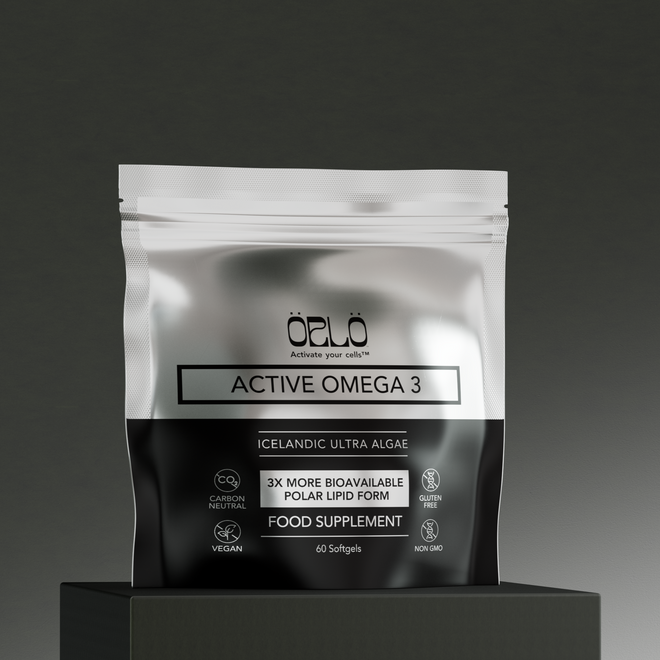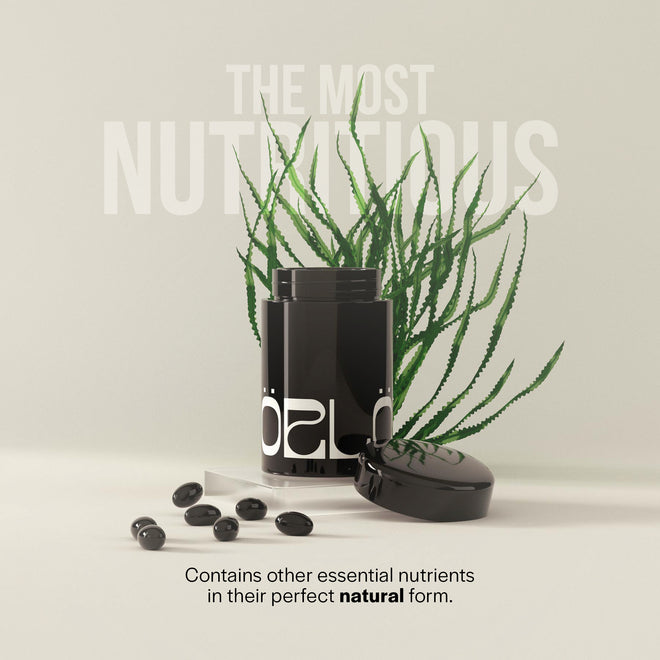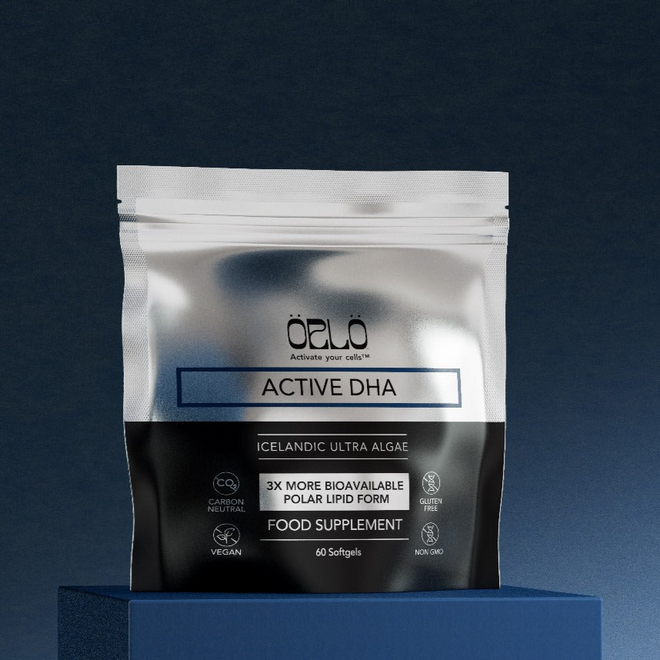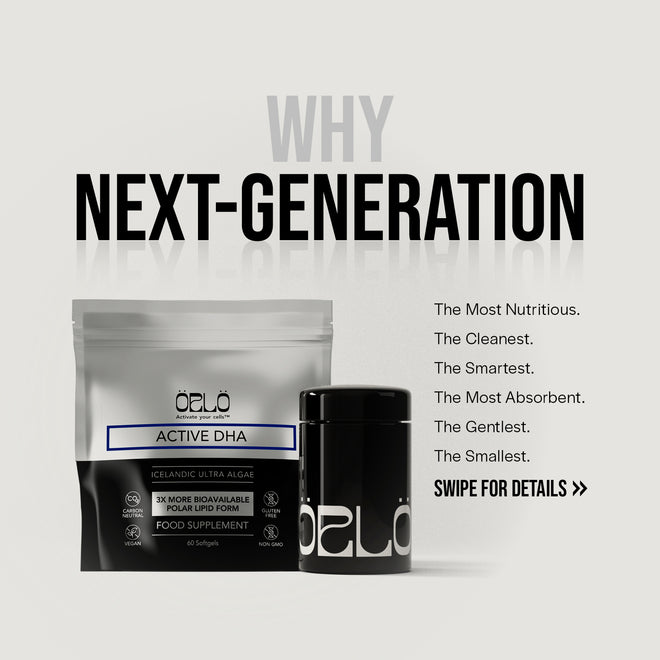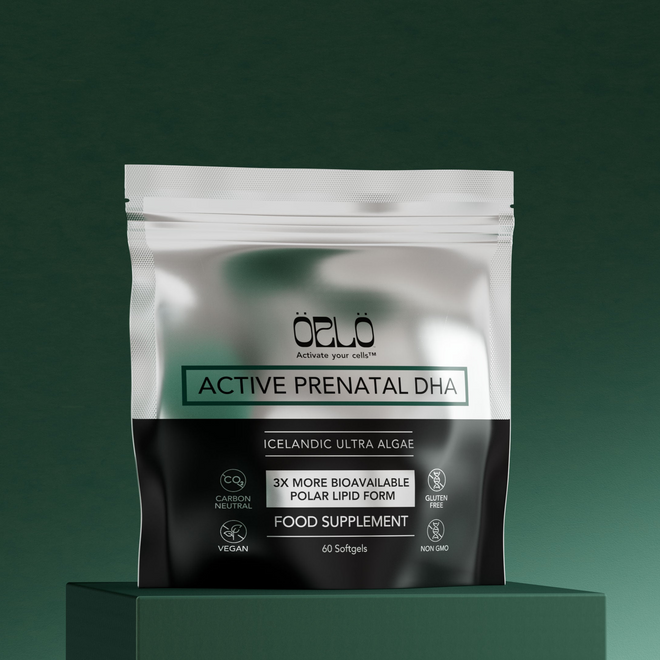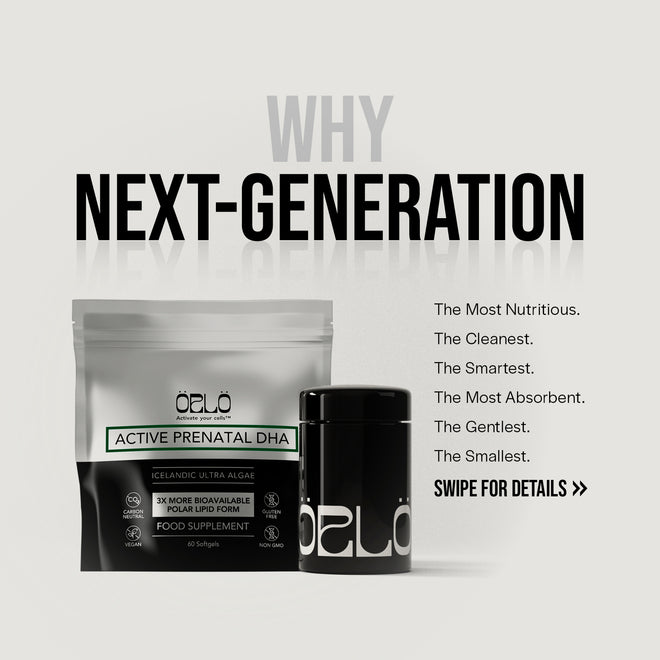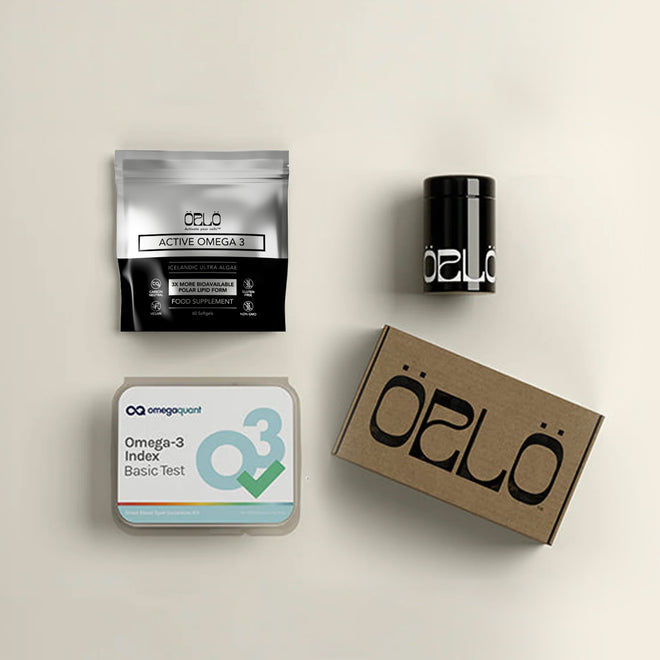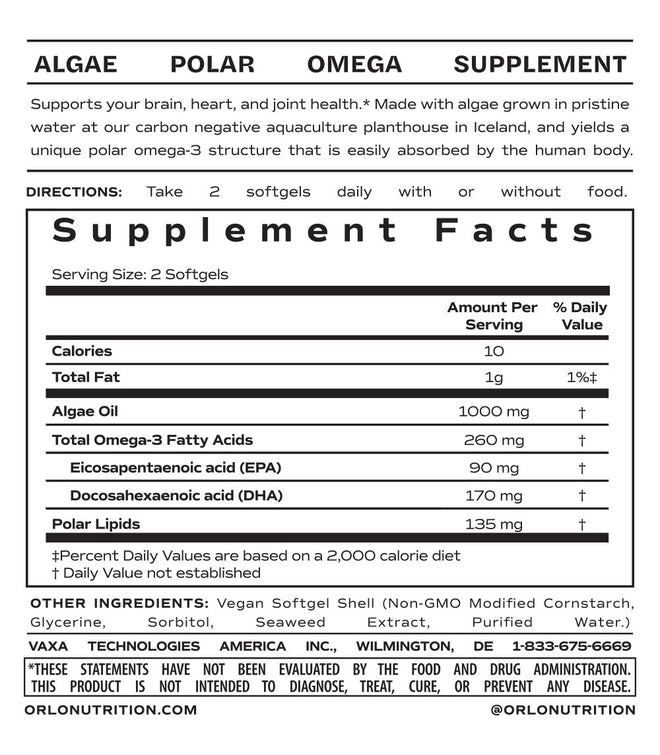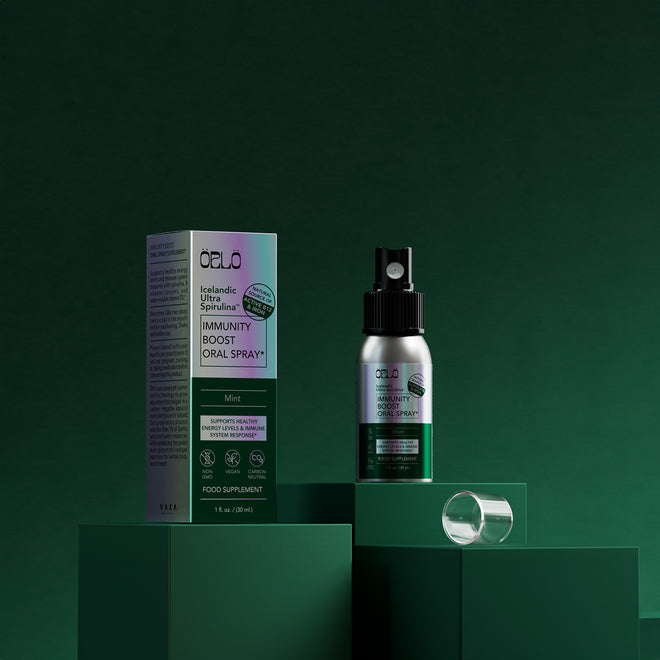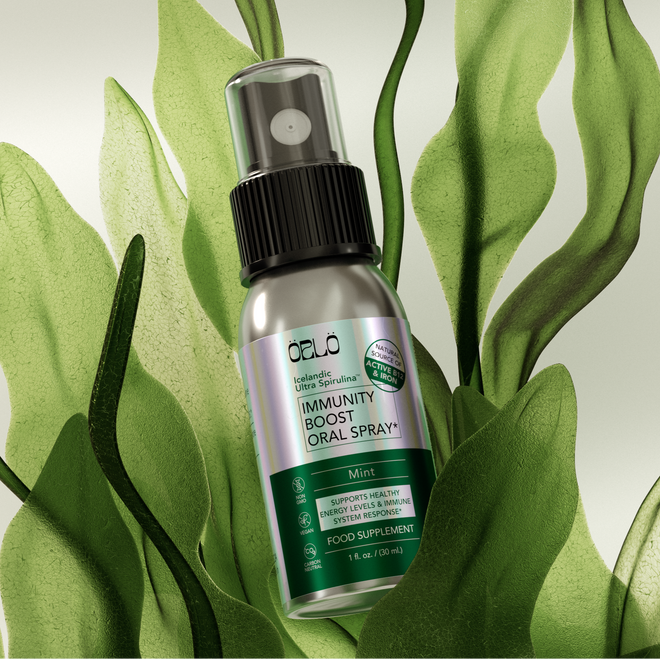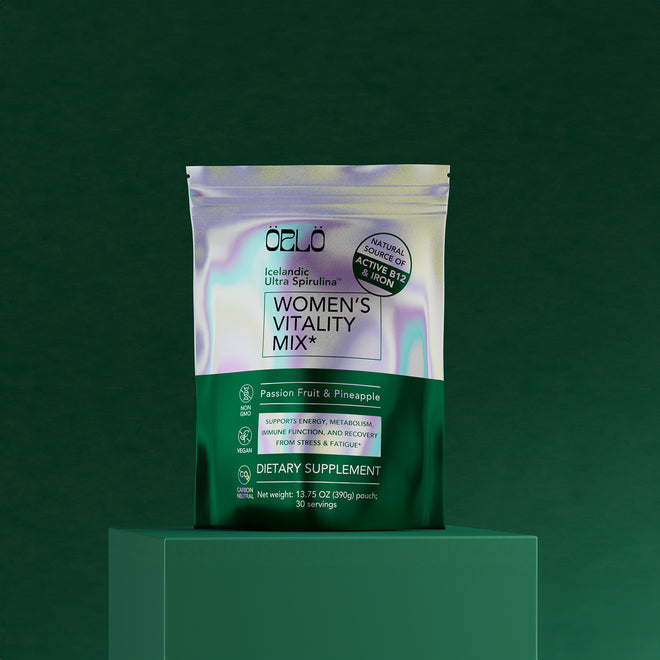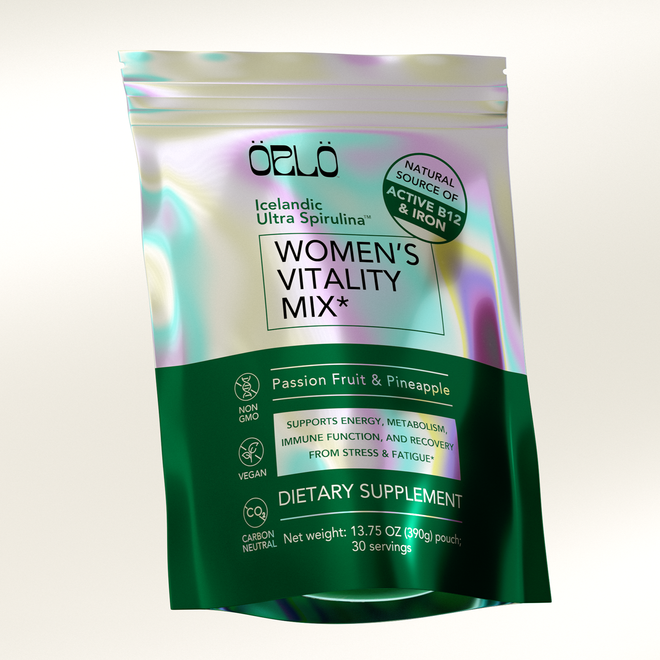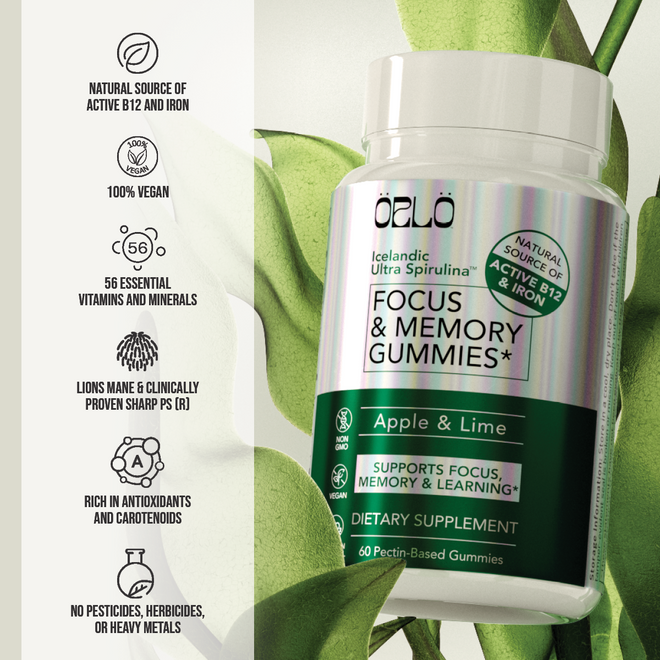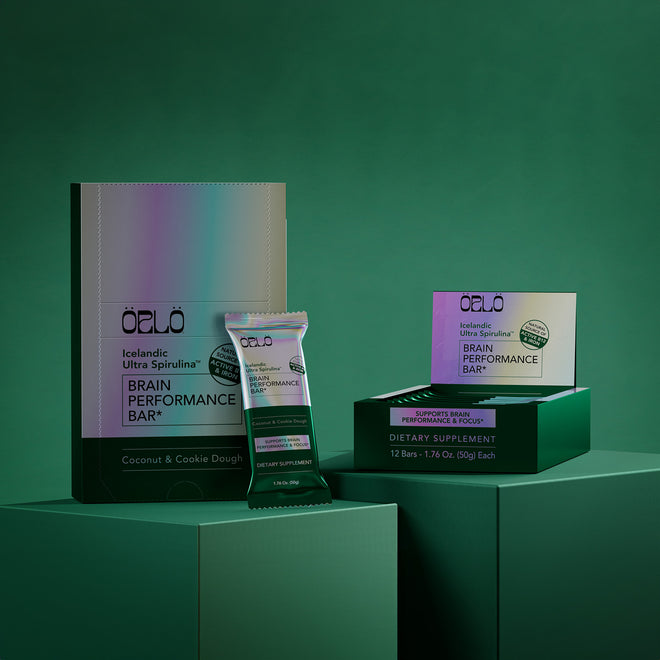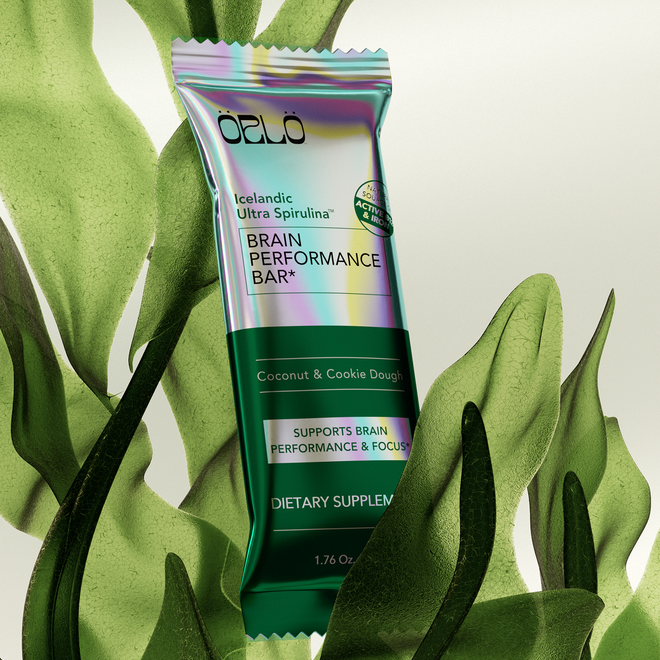25% Off - use code: HOLIDAYS
Brownies For Breakfast: Food Without Compromising Health With Lynne Bowman
Watch the episode here
Living with diabetes can be a challenge, especially when it comes to looking for food that is not only healthy but also tastes good. Fortunately, our guest for this episode shows that health does not have to be bad and bland. Corinna Bellizzi interviews Lynne Bowman, the best-selling author of the cookbook, Brownies for Breakfast: A Cookbook for Diabetics and the People Who Love Them. Diagnosed with Type 2 diabetes while being a working mom, Lynne is all too familiar with the struggle of staying healthy through food—finding it hard to find decent food that is easy to prepare without the expensive price. She then started cooking up her own cookbook, helping those going through the same things as her prepare and cook healthy food without compromising nutrition for convenience. Join Lynne in this conversation and learn about her journey as well as some of her recipes!
Key takeaways from this episode:
- What foods to go for and what to avoid
- Cooking with simplicity in the kitchen
- Go-to healthy food recipes
- Brownie recipe perfect for diabetic
- Dealing with sugar addiction and unhealthy habits
Guest Social Links:
- Website: https://lynnebowman.com
- Facebook: https://www.facebook.com/LynneParmiterBowman
- Twitter: https://twitter.com/LynnePBowman
- Instagram: https://www.instagram.com/lynneparmiterbowman/
- YouTube: https://www.youtube.com/channel/UCKvswhqbCyOW1Yscpr_JCyA
- Brownies for Breakfast: A Cookbook for Diabetics and the People Who Love Them - https://www.amazon.com/dp/B094GPM3Z3
---
Brownies For Breakfast: Food Without Compromising Health With Lynne Bowman
In this episode, I'm joined by the best-selling author of a cookbook you will enjoy reading. Her name is Lynne Parmiter Bowman, and she is here with me to talk about her new book, Brownies for Breakfast: A Cookbook for Diabetics and the People Who Love Them. Lynne, welcome to the show.
I am so happy to be with you.
I'm thrilled that we finally had the opportunity to get together again to talk about this specific work. I had the pleasure of meeting you in person in Santa Cruz, California, and getting this book in person. I have to say having that opportunity to see it myself and page through it in person with you was quite incredible. It's a beautiful work of art. One that I enjoyed even leafing through in that initial conversation. I know that took a lot of effort. I'd like to get a feel for you why did you decide to do this work, to bring this to the world, to focus on a book tour and talk to people like me and get this out into the world?
It's because I don't have any sense, clearly. This is not a thing you do to be profitable and make money. It's not but it came after me. I had to do it. I had a number of people saying, “You need to do this. Come on, do this.” In my small circle, my family, and a few friends, I was famous for being able to put a meal on the table fast and it was good. It was also healthy and nobody else was doing it. People weren’t cooking anymore. Let alone healthy and because I'm a Type 2 diabetic and have been diagnosed as such since I was in my 40s, which was a long time ago, by the way.
I've spent my whole adult life thinking about what I would be eating and what I would be serving in spite of the fact like you, like so many of us had a full-time was the sole support of three kids. Work in my shop all the time but I was not going to compromise my children's health and my health if I could possibly help it. I knew instinctively and intellectually that food was the way to stay healthy and exercise, obviously, too. That had to be in my life. That was maybe a quick walk. There was no time for gym and fancy things. I didn't have a treadmill. I tried to walk or run as best I could. Decent food had to be cheap, couldn't be expensive and it had to be fast. I had to be able to get on the table.
In my family with my little ones, we were in the habit of eating together, breakfast and dinner. I would try because it was the only social life that I could manage to have a friend over whenever possible at dinner. My kids grew up with other people at the table as well. As you know, having seen a book now that a big part of my message is that food isn't just food. Food is community. It's family, communication, love, all kinds of things, ritual, a memory so I feel like this is a time culturally, that we have let that go. We have compromised our food culture for convenience.
Yes, that's true. This show is all about nutrition without compromising your morals, your ethics, your health, or that of the planet. I think that one thing that we miss is that when we are eating on-the-go, when we are picking up these packaged foods, or when we are not eating whole nutritious foods, we are compromising our health. Essentially, we're borrowing from the future that we might have by consuming things that are not. They're not healthy for us.
They gum up our systems. You eat a grain-based diet as opposed to something that's more whole foods-based. If you're having a lot of guar gum and some of these other fillers that are incorporated into our foods to help the mouthfeel, be a little better or the shelf stability be longer. Essentially, what we're doing is we're clogging our systems.
Big food has been selling us crap since the ‘30s, the ‘40s, and the '50s but particularly, for Baby Boomers like me, we're born into this culture of, "We've got cereal. We have grocery stores with all this stuff in it.” Our moms were thrilled that they could make Betty Crocker’s cakes and they were fast. We have 60 or 70 years of big food making big money on our health at the expense of, we are now at 85%, 90% the people in this country have a chronic disease.
Food isn't just food. Food is community, family, communication, and love.
Our health budget is the money that is all going to maintain people with chronic diseases. Not improve them. Not cure them. Not do anything but keep them alive. Personally, a big part of what drove me, I think, was my mother dying when I was young. I was eighteen and saw what chronic disease did to a family when a mother dies young. I lost my family, literally the house, my dog, everything was gone. She couldn't help it. It was kidney disease and dialysis was in a very experimental stage at that point.
I don't know if it would have helped or not but the point is that I had a very crystal clear and negative idea of what chronic disease meant. I’m determined not to have that in my life if I could help it. Everything that talked about preventing or reversing chronic diseases like diabetes. I was on it like a bug on poop. I'm not an MD and I'm not a chef. I'm a grandma.
You've made it this far. Now, out on a book tour. One of the things I will say is that this book pairs nicely with an earlier topic we covered with Dr. William Li, who wrote Eat to Beat Disease, who is speaking of very much the same thing, going back to whole foods. Stop shopping at the center of the grocery store, where everything is packaged or frozen. Go to the periphery. Eat more nuts and seeds, less grains, and bread. Consider fruits and vegetables as your primary staples. Things that we all seem to intrinsically know but we shoved to the wayside when we're busy and we want something quick, fast and dirty.
It's a habit. I don't even shop in grocery stores. In fact, many of the people that I know don't. I live in a place where I'm surrounded by small farmers and regenerative agriculture and we are also near the ocean. I've got the trees talking to me all the time, along with the grass and the cattle and everybody. They're all saying the same thing, which is, “Please don't go in there and buy that box of crap and think that it's food. It's not. It's something that has been engineered for craveability by some guys in a building in New Jersey.” Nothing against New Jersey but that's where they are. They're on the highway. You don't want anything in your body that has been engineered for craveability because that is more sugar, more fat, more of those ingredients that you mentioned.
Sugar, fat, and salt. It's like that magic triumph. They get them in a particular balance and it's like you can't put it down. You eat one chip after the other and before you know it, the entire bag.
Once you start eating nutrient-dense food, you'll get it. If you're not eating it now, you will get it. My brownies, for example, if you eat at 1 or 2, your body goes, “Thanks. That's good.”
My go-to food in this perspective is walnuts. I can never eat more than about a handful of walnuts. You eat about half of a grapefruit and that feels like enough. You don't necessarily go for the second half of it. It can be saved for the next day. There are plenty of foods that are like that. It's like they have the triggers to tell you, "Now it's time for something else.”
The more we know about our microbiome, the more we understand that there are times when your body needs to eat certain kinds of food. Eating fruit in season matters. Ayurveda has known about that forever and a lot of other international food cultures have known about that. We can maybe poo-pooed it because it was ancient knowledge but we now have studies to support how important it is to eat fruit, for example, seasonally because your microbiome needs that and wants that now. I think that's pretty important information.
If you're eating that way, you can step away from a lot of the packaged goods. For instance, one of the things that drive me nuts is the amount of packaging that goes along with berries like these plastic packaging.
Go pick them.
Do you go pick them? Blackberries grow wild here like crazy. They do tend to be littered somewhat with also a poison.
You’ll get scratched but that’s part of the deal.
There are a couple of themes that I saw on a page in your book. One of which is less reliance on animal products and ingredients. Another was how simple your kitchen can be like you don't need a lot of these appliances that I think we're told we need. Like this slow cooker and that air fryer and this mixer and that blender. Down the line, we don't need a Cuisinart in order to make healthy food. Can you talk to me a little bit about some of the unconventional approaches? I would say unconventional for now to the recommendations that you make in your book-specific, even as a for example to having chain mail to clean your iron skillets.
That was a gift to me. I absolutely love it and I wouldn't change it for anything because chain mail if you're not familiar with it. It's what it sounds like. It's a piece of woven metal that is perfect for cleaning stuff that's been baked on. Particularly perfect for your iron skillets, your iron pans, and which I also use all the time. They're great. I don't have a lot of great stuff and chef's stuff. I was too cheap or too poor for many years to have it. My habits were built around simplicity. I don't apologize for that. I enjoy the New York Times Wirecutter feature. I don't know if you pay attention to that but they recommend products in all kinds of different areas. They did a piece about air fryers and the answer was surprising.
A toaster oven is the best air fryer and they gave the brand. I think it might've been a Kitchen Aid. I don't remember for sure. Don't quote me but look it up, New York Times Wirecutter, the best air fryer turns out to be a toaster oven, which I use my toaster oven every day. It's one of the things that sit out in the kitchen. You can do a million things in a toaster oven. I also nook food. I couldn't survive without my microwave.
I have dear friends that won't go near microwave and never use a microwave but I am married to a nerd who assures me that it's fine. Especially if you balance it with all the healthiness that you can get out of a microwave and throw on the table by reheating and putting something together quickly. They're a great convenience. I have a microwave. I love it. I have a toaster oven. I love that. Mine is old but when I replace it, I will now know that I need to get this one that works like an air fryer too.
I wonder if it could also be used as a dehydrator if it was on a low setting.
You don't have to have much. You don't have to have a complicated kitchen at all. There are certain basic things that you want to keep. I recommend a few things that you might not have in your kitchen that I have in mind and depend on things like truffle salt. It sounds fancy but truffle salt makes so many things taste great just with that little addition. An ordinary dish suddenly is elevated to, “That's good,” in the addition of truffle salt. Also, smoky salt.
We have compromised our food culture for convenience.
There are lots of different smoked. Applewood smoked and hickories with different smoked salts but that is satisfying when you're not eating bacon and greasy things. You can put a little of that smoky salt on a dish and you can have that smokey bacony satisfaction and no calories. Salt, by the way, is something that's perfectly fine to add to food. Where we get in trouble with salt is in processed foods.
Pre-packed soup and vegetables.
If you look at the amount of salt that's in them, it's like boom falls of salt in that packaged soup that you're getting. Whereas, if you're sprinkling salt on stuff, it's not very much. People are frequently asking me, "What about salt?” I love it and I put it on everything but I can see how much I'm putting on and it is not very much. You can't see how much you're putting on when you're eating Triscuits or something out of a bag or a box. It's got a ton of sodium in it every single time.
Dr. David Perlmutter wrote a book called Drop Acid. In it, he talks about the fact that the consumption of salt, the way we consume salt here in America can make us store a lot more water and that we're not drinking enough water to balance that out. Our body is storing water in our fat cells because it's one of the ways that evolution has taught us to get through difficult times. People may be experiencing a lot more than traditional waterways because they're consuming too much salt. They're out of balance. They're not consuming enough water to help to level things out and enable their cells to return to their true homeostasis.
They're essentially doing what a camel does on its hump. They're storing that water on their bodies, their midsections, their thighs, the rears, and everything else, which is something that impacts all of our health negatively as time goes on. It's that visceral fat. That fat around the midsection that tends to dramatically impact our health over the long-term then results in some of these more chronic diseases that are preventable in many cases. I think it's one of those things that we shouldn't take for granted that we should get back to our kitchens to make food simply.
This leads me to a question I had that relates to both the title of the book and the content of your book because as you call it Brownies for Breakfast, you might think that it was just a baking book. I don't want to say just a but you're working in here to show people recipes for dinners and other meals and ways that they can make their kitchen simple. Also, how they can do something like bake without grains. I'd like for you to talk about some of the recipes that you put into this book. What are your favorites or your go-tos might be? How are they different from the traditional version of that same recipe?
Know that these were all my favorites and my go-to's. This was not a book that was photographed by a professional photographer with food stylists. They are pictures that I took with my iPhone of the actual food in my kitchen with nobody standing over it because back in the day, it took ten people to do a food shoot. You had the food stylists and the light people and all this stuff. This is done with an iPhone. That's it.
Apple is not sponsoring this show to be clear.
To me, that was important because I want you to use it. I want you to make this food. It's so easy and so good. One of my favorites that comes to my mind is immediate because it's so simple is mushroom soup. Mushrooms are an amazing food. They are good for you. I'm not talking about the fancy mushrooms. I'm talking about the little white or the cremini or whatever that you get at Trader Joe's or wherever.
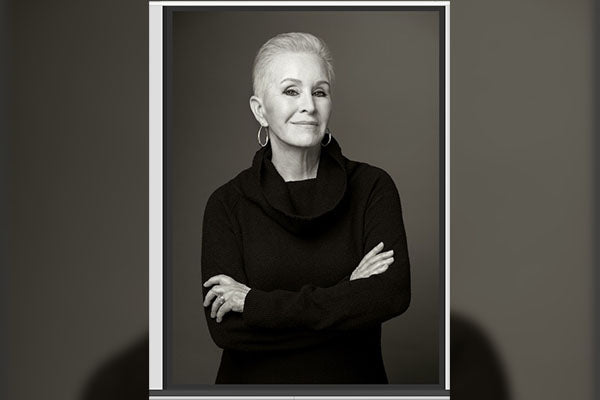
They were cheap. They're super nutritious. They keep pretty well. When you need to cook them, you finally pull them out and you make this. It's mushroom soup and all it is onions. You can use red onions. You can use yellow onions. Slice them up, throw them, you chop them, throw them in the pot with some sliced mushrooms, a bunch, however much. I don't measure stuff, by the way. I have measurements in the book but again, I'm a grandma. I tend to take it out of the fridge, chop it and throw it in the pan.
A little bit of olive oil. A little bit of vegan butter if you want that buttery flavor. You can have it. It's just onions, mushrooms, and broth. I use a vegetable broth. You cook it for an hour then you put it in the blender. Be careful to hold the lid down, as I mentioned in the book, so it doesn't go everywhere. You season it with salt, pepper, whatever, truffle salt. then you add a little bit of whiskey. I guarantee, especially anyone who is wooing someone with food, which is a very good way to woo someone. This is a killer recipe. People will go, "You made it from scratch?” It's like three ingredients.
It took you an hour but the prep time was five minutes. I want to mention something because we talk about mushrooms. Mushrooms are an incredibly nutritious food but they also have a property that many may not know about. If you leave your mushrooms out in the sun for just half an hour before you cook with them, their levels of vitamin D shoot right up. You get more vitamin D from your mushrooms by putting them in the sun before you will use them. This is something I learned a while back and I'm like, “That's a game-changer,” because if we can get more healthy vitamin D-3 and get them from mushrooms, then fantastic. Why not get it from your food?
I'm thinking, as you say that. I've got squirrels, lizards, snakes, and stuff. Am I safe leaving them out? I would have to think about where I do that.
Even in the window, it works. As long as you're there being hit by the sun.
They're great, to begin with. If you can add a little vitamin D. To these recipes, it is not hard to cook great food. There's a recipe in the book called Genius Soup, which is truly genius. It's the thing that people know they probably should do, which is on the weekend. When you have time, make this soup. It's easy. You clean out all the tired-looking greens in your fridge. You put all the carrots, everything. I tell you how to do this. It’s not hard but you have to chop some stuff then you throw it in the soup pot. I hope you have a soup pot. You need one. It cooks for a long time but you have to stand over it.
You put the lid on, simmer low and walk away and let it cook or if you have a slow cooker, great. You have this big giant bunch of soup from which you can do pasta one night. You can do tortilla soup one night. You can do bean soup one night. You can make my French hell, I call it cassoulet with lentils, which is amazing. It's all with this soup base that has every vegetable in the world. All leafy greens, which I don't care where you're reading or what diet you're on.
They all come back with lots of leafy green, cruciferous vegetables, and leaves. That's what we need to be eating a ton of. The challenge in our diets is to eat leafy greens often. I also give you ways to do that for breakfast and do it for snacks. You just need to make a habit of thinking leafy green. It's leafy and green then eat it.
The reality too is when it comes to leafy greens if we all think about them as salads, people will say things like, "I get tired of chewing after a while.” You don't have to sit there and eat a bowl of kale. That's the thing that is a misnomer. If you do consume eggs, one of the things that I enjoy doing in my kitchen is making essentially a paper rod, which is a French dish.
The more we know about our microbiome, the more we understand that there are times when your body needs to eat certain kinds of food.
You're probably familiar with that but it's like an omelet. A thicker omelet that you set first in the pan then transfer to the oven to let it bake. You wilt an entire batch of spinach on top of that and then mix it in. It adds to the overall flavor. You can put garlic, tomatoes, or whatever you want in there. You could put some meats in if you want but you don't have to.
You could keep it in a farm-fresh egg base along with whatever vegetables that you felt like adding and spices. There's something else that I saw on TikTok that I thought was quite interesting. A couple of guys were trying a woman's recipe for a bacon replacement of basically cooked banana peels. What she did was take the banana peels. This is something I would never have thought about eating.
Basically, scoop out the white innards of it just leaving the yellowy skin and marinading that with soy sauce and some smokey spices to give it that bacony flavor then frying it in a pan much like you would bake it. The guys who tasted it said it tasted delicious. It wasn't bacon but it was something that they would go back to. They were looking to myth-bust it and found out that they were fans.
I have two issues with that. Bananas are a bit problematic, especially for those of us who are diabetic. Bananas are sugar.
Their glycemic index is high. You learned that fast if you study nutrition.
The other thing is when you're frying banana skin, you're frying in oil. I would love to see people get away from frying anything. As a culture, we fry a lot of stuff and we are accustomed because the convenience foods that we like are often fried or deep-fried. Whatever we like that crispy thing that happens but this isn't a habit that you want to develop in the kitchen that is going to help you live longer and so on.
I do tend to agree with you. The amount of fat that we consume that's superfluous and unnecessary is quite high.
You don't need it. There are too many other good things to eat and again if you're struggling to eat banana peels. I'm not sure why that comes about.
You're reducing your waste but I tend to put them in my compost, so they feed my garden. I wonder, as the title of your book, going back to that Brownies for Breakfast, what makes your brownies recipe different?

There's no sugar, no oil, no flour, and no grains. It's one bowl. Super simple. Everything in the book basically is designed so an 8-year-old or an 85-year-old will be comfortable doing it. My brownies are made with nut butter, pumpkin, monk fruit sweetener, egg or egg replacer, a little bit of baking soda, and cocoa. Plain old cocoa, which is such good food. Chocolate is a fabulous food. I'm a fan. You can put walnuts on top of it.
For the frosting to make it gorgeous, I use Trader Joe's simply light sugar-free dark chocolate bars with a little bit of soy milk or oat milk nuked. It makes the most beautiful satiny sugar-free frosting. It is so easy. It's fantastic. For the brownies, you can tune from super gooey to more cakey. Depending on how you like them by changing the amount of pumpkin. Here you have food then that is basically made out of nuts and pumpkin.
Is it good enough for breakfast?
Any time, it's fine. As we mentioned, you eat 1 or 2 of those puppies and you know you've eaten something. You're not going to stand at the sink and narfe down, “I have a pan of those.” You're going to eat 1 or 2 and that'll be fine.
It's got a lot of fiber and natural antioxidants from the chocolate. That was one of the gifts from Dr. William Li’s book, Eat to Beat Disease. Chocolate activates all five of the centers to support your health and essentially prevent disease, which I think is amazing. Red wine also appeared on many of those but only one glass. Not 2, 3 or 4. Not the bottle, for sure, just one glass. One regular size like 4 to 5 ounce pours. Ultimately, if we choose the right foods, if we say crap ourselves by feeding and nourishing our bodies, then we're not going to crave all the junk. I think that's the point.
Quitting sugar is a thing that people are always asking me about because it's like, “How in the world does anybody do that? How do you quit and give up sugar?” I always come back with, "You know that sugar is addictive.” Not in a metaphorical sense. It is biologically addictive.
It's the same reason that alcoholics often become sugar addicts after they stopped drinking.
Sugar is highly addictive. If I said to you, “It's more addictive than heroin.” If I said, “I'm a heroin addict but I'm going to cut that. What would you say to me?” “Girl, you're full of it. You can't cut back on an addictive substance. You need to drop it like a hot rock.” It will do so many good things for your body, your budget, and your table by eliminating sugar. It's so worth it. In 2 or 3 weeks, your chemistry and saliva change. You don't want it anymore. People ask about cravings because once you've put yourself through rehab and beat the addiction, you don't crave it and you are so much better off.
You're talking about the gut-brain balance here too because what we're finding more as research goes on is we have a brain in our gut and because our bodies are made up of more cells of our microbiome than they are even of our own human cells. Essentially, there's this connection and conversation that happens between your microflora and your brain, so it triggers. Hormones are all triggered because of the foods that we're eating. If we stop feeding the unhealthy bugs that candida and things like that, that cause us to crave more sugars, then suddenly you're able to get to this path where you say goodbye to some of the more unhealthy habits more easily.
The challenge in our diets is to eat leafy greens often.
Food becomes so much more interesting, fragrant, beautiful, and varied. When you stop the focus from being on meat, potatoes, and pasta, you put the focus on plants. All of a sudden, you’ve got green, purple, red, orange, yellow, and different textures and shapes. People are always asking you, “How do you get your kids to go along with this? How do you get your kids to eat this stuff?” Kids love it. Kids love to eat what they grow and cook. That's how you do it.
You grow something and the kids are part of what you grow and cook. Also, please parents, the kids are part of setting the table, clearing up the table, and doing the dishes. I think maybe a more important part of their education than another language, another choir, or whatever it is that you're doing is driving these little things around all the time. They're eating bad food in the back of the car while you're driving through bad traffic. There are other things that are important.
If you don't have the liberty of a yard where you can grow your own food, even taking your children to the grocery store, shopping with them, and giving them a task. One of the things I gave my older son when he was five years old was when we went to a grocery store in Colorado when we were on vacation. I said, “We're going to cook something different tonight. Choose one thing you've never eaten before.” I made them choose it from the produce aisle. He came back to me with a Buddha's hand, which I'd never cooked with that citrus before. We went on this journey of trying to find a recipe that specifically asked for Buddha's hand in it then created our own lemon chicken.
I'm sure your son was so pleased with himself.
It was a fun journey with him. It showed me that I needed to involve him more in the preparation of the foods that we put in front of them. Now, when they come home from school, they're always hungry right away. I cut up a bunch of fruits and vegetables and they have it sitting out for them so they can graze while we do the cooking because they're eating something healthy, identifiable that's colorful, nutritious, and crispy. Now, my oldest son doesn't like things to be steamed. He wants to eat them raw. He likes that raw vegetables.
Teach your kids knife skills. They love it. It's a way to keep them safe. If you do teach them how to handle a knife and how to use a knife in the kitchen, you have a better chance of them not hurting themselves. Teach your kids to be at home in the kitchen. My kids always knew that they could go roaming and grocery store with me because, in those days, I had to take them with me. They could bring me things but they had to be able to read the label to me.
They had to be able to tell me what was in that food. It got to be great comedy trying to read all those words on the ingredients list on the package because they're like, "Dextrose and smalt rose. What?” The kids became very aware very early of what was in that food. They also learn to read while they're doing that and all about shopping.
That's a good point. You mentioned that you are a Type 2 diabetic. Do you still have to take insulin or have you been there?
I've never taken insulin. That's what I want for you because insulin does bad things when you're taking insulin. If you're a type one, you probably have to but insulin is not where you want to go. I take a small dose of Metformin once a day at night, which I now know is a designer drug. People are taking it for longevity benefits, not because they are diabetic. It somehow mimics fasting in your body. My hemoglobin A1C has come down nine points in the last few years since I started seriously finishing this book because I started walking my talk.

I learned some new things that I didn't know when I started the book. What I want everyone to understand, my physician said to me, “Lynne, that doesn't happen in people your age.” I'm here to tell you it does. You can do that and you do it with food, exercise, and not eating all the time. I also do intermittent fasting. Time-restricted eating is a hugely effective technique, especially for people who have glucose challenges like myself.
Are you on a 16/8? I'm curious what intermittent fasting is.
I’m 18/6 more. I eat some breakfast and some lunch.
That means six hours of the day, you're consuming, and the rest, you're mostly on water, maybe coffee. I'm on coffee almost all the time.
Coffee, but I don't drink coffee in the afternoon. I drink coffee in the morning only because I'm old. I can't do that. It is miraculous in its ability to amp your energy. We don't have time. I know now to talk about autophagy, your microbiome in detail, and cellular affects that you get, but it's fascinating. Maybe we can do that in another show or you can do it with someone else because that's the stuff that we know now that we didn't know 15 or 20 years ago.
Even some teas can help to turn that on so that you're living in more of that fasting state. Your cells are activating to create more of the growth factors and things like that that are working in your favor as opposed to against your favor. That's great. I so appreciate your time, Lynne. Where would you prefer that people go to find your book? I know Amazon is pretty much where most people go but can they come to you directly? Do they go to a local shop? What would you recommend?
If you have an independent bookseller, and I hope you do, we all want them to survive, please ask for it. Do me a favor and make a little fuss and go, “You don't have it? It's a fantastic book. It's so popular. It's everywhere.” They will get it for you from their wholesaler IngramSpark. Ask them to order it for you and also stock it. Tell them to stock it. It's available on Amazon. I don't sell it directly from my website but you can get it wherever books are sold.
One of the things I love in my local area, Bookshop Santa Cruz, they do a good job of that. You just go to their info desk and you say, “Do you have this book?” If they don't, they'll order it and they typically have it to you in about a week. That is about as quick as you'd probably get it from Amazon anyway then I'm supporting my local bookshop. You know I'm local to Santa Cruz because I don't call it Santa Cruz Bookshop. It's Bookshop Santa Cruz.

Yes, you're in the crowd.
I so appreciate the time that you've spent with me. I am going to get back into my kitchen with my boys and I have to tell you the recipe that I've chosen to do so with because I love it. That is the vinegar pumpkin spice donuts.
You have your donut pans and you're all ready to go.
That's another thing that you mentioned in the book. Get creative, shaped pots and pans, and things that you can cook with because it makes it more fun. I haven't seen even an elephant-shaped pan before. You can find almost anything.
Shape it like a dinosaur or anything.
That's why they have the Dino chicken nuggets now. It's like you won't eat regular-shaped chicken nuggets. Some of these things get a little bit too much of pandering to the youth perspective, but I think making it fun is important. I love the incorporation of vinegar here. My older son is in experimentation mode and he loves to put vinegar and see what baking soda does with it or whatever. He's learned that there's a difference between an acid and a base. When they interact, there are interesting things that happen. He's been experimenting even in the kitchen with these.
Vinegar had magic stuff, and fermentation is magic. All those things are so good to learn in the kitchen.
Thank you so much, Lynne, for your time.
Thank you for having me on.
To learn more about Lynne Bowman and her work with Brownies for Breakfast: A Cookbook for Diabetics and the People Who Love Them, visit LynneBowman.com. I'll even include a link to Bookshops Santa Cruz for anyone local to this area. I encourage you to lean into discovery, get back into the kitchen, enjoy cooking, and find some unique staples that you like to use in your day-to-day. It will both be a pleasurable experience for you and your families and also offer you some new nutritious foods to eat daily. If you enjoyed our discussion, be sure to subscribe to the show so you are alerted when new episodes drop. Thank you for joining us. Here's to your health.
Important Links
- Lynne Parmiter Bowman
- Brownies for Breakfast: A Cookbook for Diabetics and the People Who Love Them
- Eat to Beat Disease
- Drop Acid
- IngramSpark
- Bookshop Santa Cruz
About Lynne Bowman
 LYNNE PARMITER BOWMAN, Author of BROWNIES FOR BREAKFAST: A Cookbook for Diabetics and The People Who Love Them
LYNNE PARMITER BOWMAN, Author of BROWNIES FOR BREAKFAST: A Cookbook for Diabetics and The People Who Love Them
A best seller on Amazon, with a five- star rating and rave reviews, Brownies for Breakfast is a cookbook you’ll actually enjoy reading and using. Frank, complete, simple: favorite sweets and comfort foods, reimagined as whole food, plant-based, sugar-free, low-carb, dairy-free, gluten-free classics.
Beautiful graphics and photos, nutrition facts for every recipe, plus a great, fun read: one of the best cookbooks you’ll have on your shelves whether you’re diabetic, pre-diabetic, or just hoping to live long and prosper. Everything you need to know about sugar substitutes, dairy-free baking, no-carb thickeners, gluten-free options, plant-based protein, sleep, stress, shopping, equipping your kitchen, all in straightforward, no-bs language.
Lynne has been featured at women's expos throughout the country, teaming with actress Deidre Hall to write and publish Deidre Hall's Kitchen Closeup (2010) and Deidre Hall's How Does She Do It? (2012). In previous lives, she won national awards as a creative director for Silicon Valley companies, was Creative Director at E&J Gallo Winery, Advertising Manager at RedKen Laboratories, and freelanced for agencies in San Jose, Los Angeles, and New York.
She has also worked as an actress, makeup artist, screenwriter, illustrator, legal journalist and television Weather Person. Lynne has three grown children, two absolutely perfect grandchildren, and is president of The Pescadero Foundation. She and her husband have a small farm on the coast of Northern California.

